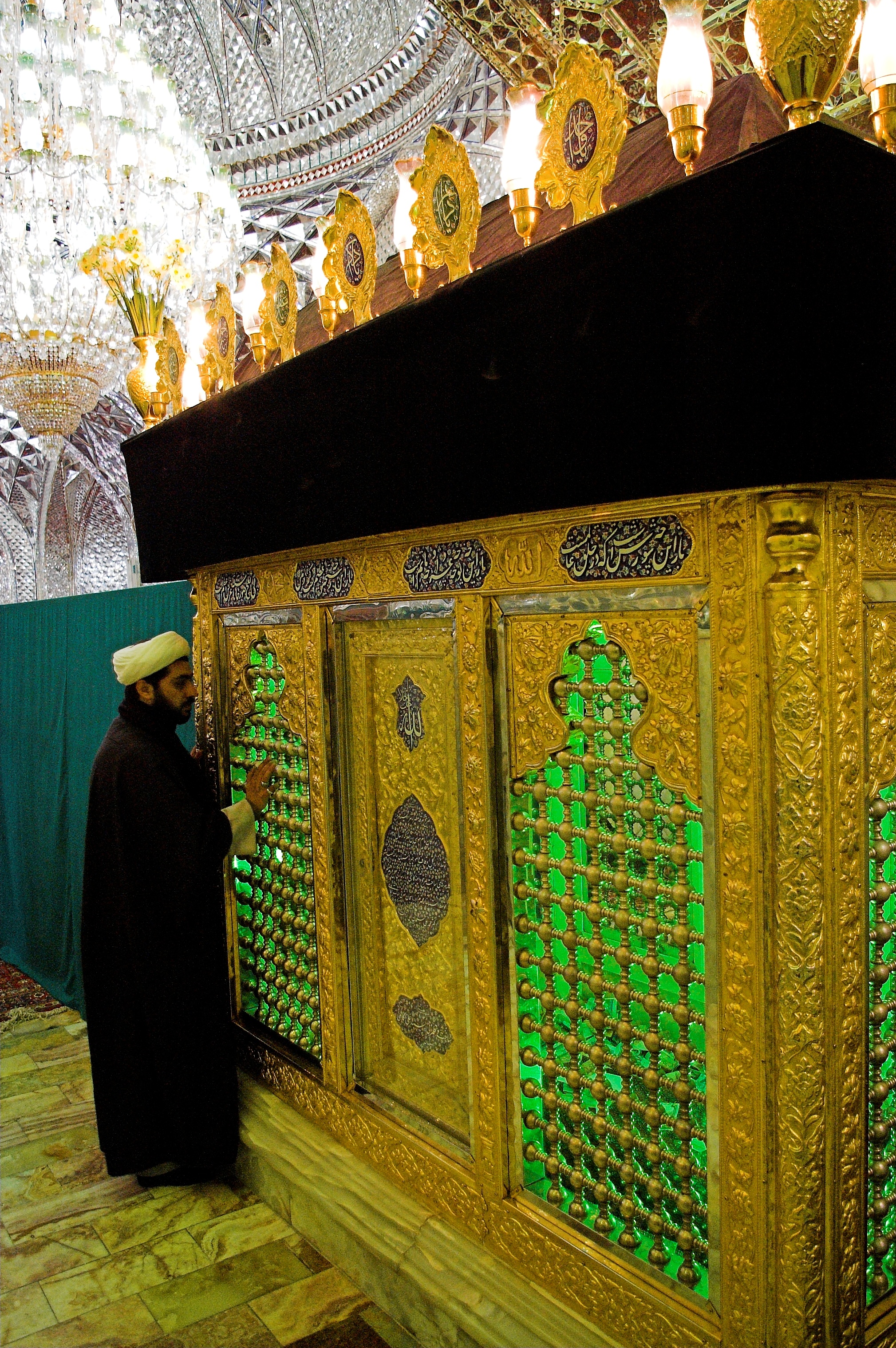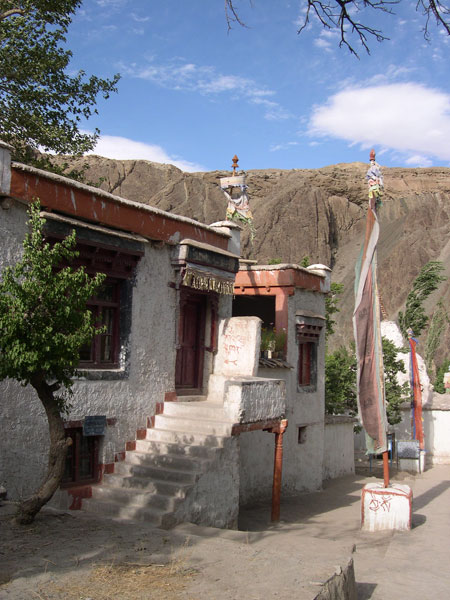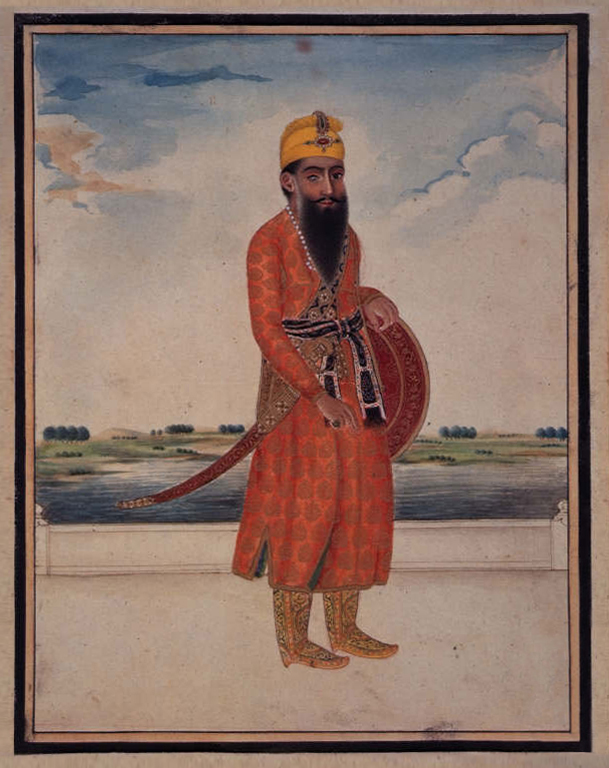|
Qabā
A ''qaba'' (, from Middle Persian ''kabāh'') is a long coat with sleeves and buttons, similar to a cassock, open at the front. The Mughal emperors wore ankle-length garments. The outfits during the reign of Babur and Humayun are more or less the same, i.e. qaba, jama, pirahan, jilucha, jiba and kasaba. Unlike the jama, which was a four-pointed long-coat the Qaba and takauchia were of a broad girth at the bottom. There are mentions of the qaba in the ''Baburnama''. At present, qaba is one of the essential parts of the dress of the clerics or mosque leaders. It was worn in Egypt, Turkey, the Levant, and Persia, among other places. When Henry II, Count of Champagne, king of Jerusalem, tried to build a friendly relationship with Saladin, he requested the gift of a qabā and a sharbūsh', which he wore in Acre. In Arab contexts, two main variations were noted; the Turkish style (''al-aqbiya al-turkiyya''), and the Tatar (or Mongolian) style (''al-aqbiya al-tatariyya'' or ''q ... [...More Info...] [...Related Items...] OR: [Wikipedia] [Google] [Baidu] |
Sharbūsh
The ''Sharbush'' or ''Harbush,'' Sarposh, Serpush (, , ) probably derived from Persian word Serpush, which means "headdress". was a special Turkic military furred hat, worn in Central Asia and the Middle East in the Middle Ages. It appears prominently in the miniatures depicting Badr al-Din Lu'lu' (ruled 1234–1259). It was a stiff cap of the military class, with a triangular front which was sometimes addorned with a metal plaque. It was sometimes supplemented with a small ''kerchief'' which formed a small turban, named ''takhfifa''. The wearing of the ''Sharbūsh'' was one of the key graphical and sartorial elements to differentiate Turkic figures from Arab ones in medieval Middle-Eastern miniatures. The ''Sharbush'' could vary in size and shape, sometimes taking huge proportions, as in the depiction of the emir in the frontispiece of the 1237 ''Maqamat of al-Hariri''. The shape of the ''sharbush'' seems to have varied depending on geographical regions: * The ''sharbush'' of A ... [...More Info...] [...Related Items...] OR: [Wikipedia] [Google] [Baidu] |
Mullah
Mullah () is an honorific title for Islam, Muslim clergy and mosque Imam, leaders. The term is widely used in Iran and Afghanistan and is also used for a person who has higher education in Islamic theology and Sharia, sharia law. The title has also been used in some Mizrahi Jews, Mizrahi and Sephardic Jews, Sephardic Jewish communities in reference to the community's leadership, especially its religious leadership. Etymology The word ''mullah'' is derived from the Persian language, Persian word ''mullā'' (), itself borrowed from the Arabic language, Arabic word ''mawlā'' (), meaning "master" and "guardian", with mutation of the initial short vowels. Usage Historical usage The term has also been used among Iranian Jews, Bukharian Jews, and Afghan Jews to refer to the community's religious and/or secular leadership. In Kaifeng, China, the history of the Jews in China, historic Chinese Jews who managed the synagogue were called "mullahs". Modern usage It is the term ... [...More Info...] [...Related Items...] OR: [Wikipedia] [Google] [Baidu] |
Enthroned Person Wearing A Qaba Dress Xith Tiraz Armbands, Kashan, Late 12th Early 13th Century CE
Enthroned is a Belgian black metal band formed in Charleroi who are one of the premier acts of the Belgian black metal scene. History The band was founded in 1993 by drummer Cernunnos. He soon recruited guitarist Tsebaoth and a vocalist from grindcore/black metal band Hecate who stayed until the end of December 1993. Then bassist/vocalist Sabathan joined. The band released a five-track demo tape in mid-1994 which brought them to the attention of several independent labels. A 7-inch split EP with Ancient Rites was then released by the underground label Afterdark Records. After the label's demise, Evil Alliance Records (a sub-label of Osmose Productions) released Enthroned's first full-length release, '' Prophecies of Pagan Fire''. Shortly thereafter, the band enlisted second guitarist Nornagest. Eventually, Tseboath was replaced by Nebiros. In 1996, along with Ancient Rites and Bewitched, Enthroned began an extensive tour of Europe. In April 1997, as Enthroned was to begin re ... [...More Info...] [...Related Items...] OR: [Wikipedia] [Google] [Baidu] |
Coats (clothing)
Coats may refer to: People *Coats (surname) Places * Coats, Kansas, US * Coats, North Carolina, US *Coats Island, Nunavut, Canada *Coats Land, region of Antarctica Other uses *Coat (clothing), an outer garment *Coats' disease, a human eye disorder *Coats Mission, British military mission 1941–42 *Coats Group, a multinational sewing and needlecraft supplies manufacturer *Coats Steam Car, American automobile manufactured 1922–23 *Stewart-Coats, American automobile manufactured only in 1922 *Cadet Organizations Administration and Training Service, a sub-component of the Canadian Forces Reserves See also *Coat (other) *Coates (other) Coates may refer to: People *Coates (surname) Places United Kingdom *Coates, Cambridgeshire *Coates, Gloucestershire *Coates, Lancashire *Coates, Nottinghamshire *Coates, West Sussex *Coates by Stow, in Lincolnshire *Coates Castle, a Grade I ... * Cotes (other) {{disambig ... [...More Info...] [...Related Items...] OR: [Wikipedia] [Google] [Baidu] |
Maqamat Of Al-Hariri (manuscript)
The ''Maqāmāt al-Ḥarīrī'' (Arabic: مقامات الحريري) is a collection of fifty tales or ''Maqama, maqāmāt'' written at the end of the 11th or the beginning of the 12th century by al-Hariri of Basra, al-Ḥarīrī of Basra (1054–1122), a poet and government official of the Seljuk Empire. The text presents a series of tales regarding the adventures of the fictional character Abū Zayd of Saruj who travels and deceives those around him with his skill in the Arabic language to earn rewards. Although probably less creative than the work of its precursor, ''Badi' al-Zaman al-Hamadani, Maqāmāt al-Hamadhānī'' (whose author lived 968–1008 CE), the ''Maqāmāt al-Ḥarīrī'' became extremely popular, with reports of seven hundred copies authorized by al-Ḥarīrī during his lifetime. The first known manuscripts date from the 13th century, with eight illustrated manuscripts known from this period. The most famous manuscripts include one from 1237 in Baghdad (n ... [...More Info...] [...Related Items...] OR: [Wikipedia] [Google] [Baidu] |
Alchi Monastery
Alchi Monastery () or Alchi Gompa (, also Alci) is a Tibetan Buddhist monastery, known more as a monastic complex (chos-'khor) of temples in Alchi village in the Leh District, under the Ladakh Autonomous Hill Development Council of the Union Territory of Ladakh, India. The complex comprises four separate settlements in the Alchi village in the lower Ladakh region with monuments dated to different periods. Of these four hamlets, Alchi monastery is said to be the oldest and most famous. It is administered by the Likir Monastery. It is 60 west of Leh on Leh-Kargil Highway. Alchi is also part of the three villages (all in lower Ladakh region) which constitute the ‘Alchi group of monuments’; the other two villages adjoining Alchi are the Mangyu and Sumda Chun. The monuments in these three villages are stated to be of "unique style and workmanship’, but the Alchi monastic complex is the best known. The monastery complex was built, according to local tradition, by the grea ... [...More Info...] [...Related Items...] OR: [Wikipedia] [Google] [Baidu] |
Jama (coat)
The term jama ( Hindustani: जामा, جام ; Bengali: জামা; Odia: ଜାମା ) refers to a long coat which was popular in South Asia during the early modern era. Styles ]Some styles of the jama were tight around the torso but flared out like a skirt to below the knees or the ankles. * The chakman jama, ended at around the knees. The sleeves tended to be full. The jama was fastened to either side with strings with some styles also opening at the front. What was originally male dress was also adopted by women who wore the jama with a scarf and tight fitting pajamas. The ties of the upper half of the jama are taken under the armpit and across the chest. * ''Chakdar jama'' Jama with chaks (slits) was a particular style of jama. It was the pointed jama which was like the standard Mughal jama but the skirt fell in four to six points instead of the circular hem of the Mughal jama. This jama may be derived from the Rajput court's takauchiah and therefore could be of ... [...More Info...] [...Related Items...] OR: [Wikipedia] [Google] [Baidu] |
Terlig
Terlig, also known as () or () or () in Chinese, or commonly referred as Mongol dress or plait-line robe, is an archetypal type of Mongol clothing for men. The terlig was initially developed to accommodate the culture, the equestrian and nomadic lifestyle of the Mongols, and to protect their bodies from the cold temperature of steppe regions. It was sometimes decorated with ''cloud collar'' () pattern which decorated around the robe's collar, chest, and shoulders area. As the terlig gained symbolic meaning with time and as it spread into different regions, its shape and design evolved. Hybrid forms of the terlig was developed as it came in contact with other local cultures. The terlig was worn in China, Central Asia, Korea, the Mughal Empire in India, and in medieval Egypt, Turkey, Persia, and other parts of West Asia. It is still worn as Mongol ethnic clothing in some regions. Terminology The origins of the term ''terlig'' are debatable. It may have come from the Turkic wo ... [...More Info...] [...Related Items...] OR: [Wikipedia] [Google] [Baidu] |
Chiltah
Chiltah was a Mughal period outer garment. It resembled a quilted coat. Chiltah was a royal garment. Jahangir, the fourth Mughal Emperor, wore a nadiri garment with a chiltah. Etymology Chiltah is a corrupted word of ''Chihalta'' that was a multilayer coat worn by soldiers. See also * Qaba A ''qaba'' (, from Middle Persian ''kabāh'') is a long coat with sleeves and buttons, similar to a cassock, open at the front. The Mughal emperors wore ankle-length garments. The outfits during the reign of Babur and Humayun are more or less ... References Coats (clothing) Mughal clothing {{Mughal-stub ... [...More Info...] [...Related Items...] OR: [Wikipedia] [Google] [Baidu] |
Ammama
''Imama'' or ''Ammama'' or '''Emma'' (Persian language, Persian : عمامه, Arabic language, Arabic: عمامة; Sudanese Arabic language, Egyptian Arabic: عمة IPA: Help:IPA/Sudanese Arabic, [ˈʕem.mæ] or AMMĀMA, Arabic ʿEMĀMA) is a type of turban. It is symbolically significant to Muslims, Muslim men. It is common especially with men in Iran, Afghanistan and Yemen, as well as North Africa. Wearing this headgear symbolizes authority, strength and honor. The Muslim headwear for men typically consists of two portions. The first portion is the solid cap, known as a Taqiyah (cap), taqiyah. The second portion is the outer cloth wrap, known as an Imama (the turban). Some scholars instruct Muslim men to either wear both together, or none at all, as a way to distinguish Muslim men from non-Muslim men. Hadith sources of the custom Amamma wearing is mentioned in the Hadith literature. Abu Dawud mentioned in his Sunan that Muhammad said, "The difference between us and the ... [...More Info...] [...Related Items...] OR: [Wikipedia] [Google] [Baidu] |
Ayyubid Dynasty
The Ayyubid dynasty (), also known as the Ayyubid Sultanate, was the founding dynasty of the medieval Sultan of Egypt, Sultanate of Egypt established by Saladin in 1171, following his abolition of the Fatimid Caliphate, Fatimid Caliphate of Egypt. A Sunni Muslim of Kurds, Kurdish origin, Saladin had originally served the Zengid dynasty, Zengid ruler Nur al-Din Zengi, Nur al-Din, leading the latter's army against the Crusader invasions of Egypt, Crusaders in Fatimid Egypt, where he was made vizier (Fatimid Caliphate), vizier. Following Nur al-Din's death, Saladin was proclaimed as the first Sultan of Egypt by the Abbasid Caliphate, and rapidly expanded the new sultanate beyond Lower Egypt, Egypt to encompass most of Syria (region), Syria, in addition to Hijaz, Southern Arabia, Yemen, northern Nubia, Tripolitania and Upper Mesopotamia. Saladin's military campaigns set the general borders and sphere of influence of the sultanate of Egypt for the almost 350 years of its existence. Mos ... [...More Info...] [...Related Items...] OR: [Wikipedia] [Google] [Baidu] |
Seljuk Dynasty
The Seljuk dynasty, or Seljukids ( ; , ''Saljuqian'',) alternatively spelled as Saljuqids or Seljuk Turks, was an Oghuz Turkic, Sunni Muslim dynasty that gradually became Persianate and contributed to Turco-Persian culture. The founder of the Seljuk dynasty, Seljuk Beg, was a descendant of a royal Khazar chief Tuqaq who served as advisor to the King of the Khazars. in West Asia and Central Asia. The Seljuks established the Seljuk Empire (1037–1194), the Sultanate of Kermân (1041–1186) and the Sultanate of Rum (1074–1308), which stretched from Iran to Anatolia and were the prime targets of the First Crusade. Early history The Seljuks originated from the Kinik branch of the Oghuz Turks, who in the 8th century lived on the periphery of the Muslim world; north of the Caspian Sea and Aral Sea in their Oghuz Yabgu State in the Kazakh Steppe of Turkestan. During the 10th century, Oghuz had come into close contact with Muslim cities. When Seljuk, the leader of the S ... [...More Info...] [...Related Items...] OR: [Wikipedia] [Google] [Baidu] |






